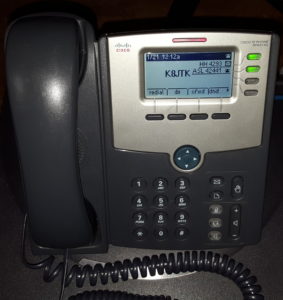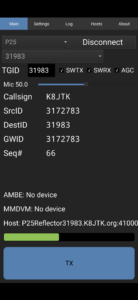One of the responsibilities of the Technical Coordinator in the Ohio Section is to submit something for the Section Journal. The Section Journal covers Amateur Radio related things happening in and around the ARRL Ohio Section. It is published by the Section Manager Tom – WB8LCD and articles are submitted by cabinet members.
Once my article is published in the Journal, I will also make it available on my site with a link to the published edition.
You can receive the Journal and other Ohio Section news by joining the mailing list Tom has setup. You do not need to be a member of the ARRL, Ohio Section, or even a ham to join the mailing list. Please sign up!
If you are an ARRL member and reside in the Ohio Section, update your mailing preferences to receive Ohio Section news in your inbox. Those residing outside the Ohio section will need to use the mailing list link above. Updating your ARRL profile will deliver news from the section where you reside (if the leadership chooses to use this method).
- Go to www.arrl.org and click the Login button.
- Login
- When logged in successfully, it will say “Hello <Name>” in place of the Login button where <Name> is your name. Click your Name. This will take you to the “My Account” page.
- On the left hand side, under the “Communication” heading (second from the bottom), click Opt In/Out
- To the right of the “Opt In/Out” heading, click Edit
- Check the box next to “Division and Section News.” If it is already checked, you are already receiving the Ohio Section Journal.
- Click Save
- There should now be a green check mark next to “Division and Section News.” You’re all set!
Now without further ado…
Read the full edition at:
THE TECHNICAL COORDINATOR
Jeff Kopcak – TC
k8jtk@arrl.net
As Technical Coordinator for the Ohio Section, I oversee the section’s group of Technical Specialists. The Specialists and I are here to promote technical advances and the experimentation side of the hobby. We encourage amateurs in the section to share their technical achievements with others in QST, at club meetings, in club newsletters, at hamfests, and conventions. We’re available to assist program committees in finding or providing suitable programs for local club meetings, ARRL hamfests, and conventions within the section. When called upon, serve as advisors for RFI issues and work with ARRL officials and other appointees for technical advice.
Technical Specialists are a cadre of qualified and competent individuals here for the “advancement of the radio art,” a profound obligation incurred under the rules of the FCC. TS’s support myself and the section in two main areas of responsibility: Radio Frequency Interference (RFI) and Technical Information. They can specialize in one or more areas or be generalists with knowledge in many technical areas. Responsibilities range from serving as consultants or advisors to local hams or speaking at local club meetings on popular topics. In the Ohio Section, there are 14 qualified specialists able and willing to assist.
RFI/EMI (electromagnetic interference) includes harmful interference that seriously degrades, obstructs, or repeatedly interrupts a radio communication service such as ham radio or public service agencies. RFI sources range from bad power insulators, industrial control systems, other transmitters or poorly made transmitters, personal devices like computers, monitors, printers, game consoles, to grow lights, failing transformers, and poorly made transformers – including one’s hams brag about getting from China for a few dollars. Our Technical Specialists can offer advice to help track down interference or locating bozo stations. Technical information is wide-ranging, everything from antennas to Zumspots.
How can we help? The knowledge and abilities of YOUR Technical Specialists are really quite impressive. Here are examples:
- Antennas (fixed, portable, and emergency operation type) and feedlines
- Antenna systems such as towers, guying, coax, and baluns
- RF and tower safety
- Grounding
- Propagation
- Electronics and circuits
- Tube technology, aka boat anchors
- Voice and data modes – including D-STAR, DMR, Fusion, NXDN, P25, APRS, IGates, packet, MT63, FT8/4, Olivia, PSK, and using programs like Fldigi
- NBEMS – Narrow Band Emergency Messaging System
- Computers, Windows and Linux, Raspberry Pi
- Embedded devices
- Networking: IP networks, AMPRNet, routers, firewalls, security, mesh, and microwave
- Repeaters, controllers, and high-profile systems
- Internet and VoIP linking systems – Echolink, AllStar, HamVoIP, DVSwitch, and PBX/Asterisk
- RFI detection from power lines and consumer devices including working with governmental agencies to track down interference
- Professional certifications such as Motorola Certified Technicians, Certified Journeyman Electronics Technician, General Radiotelephone Operator License (GROL), and Society of Broadcast Engineers (SBE) affiliations
This impressive list of qualifications is an available resource to all in the Ohio Section. Looking for guidance in one or more of these areas? Need a program for your club meeting? How about a technical talk or forum at a hamfest? Assistance or direction on a project? My contact info is near my picture and on the arrl-ohio.org website. I’ll assist getting you in touch with an appropriate Technical Specialist.

Many in our section have a Hamshack Hotline extension. Hamshack Hotline is a Voice over IP system using the same technology, called a PBX (Private Branch Exchange), many businesses utilize for their phone systems. Recently, another similar service appeared called Hams Over IP (HoIP, IP as in IP address). It’s not as catchy or easy to rattle off as HamShack Hotline. Best I’m able to tell, the service started around the time of Dayton. Unfortunately, like many clubs that have formed and split over the years, political issues at HH mounted and led to the formation of another service. Hams Over IP formed out of some former Hamshack Hotline admins and engineers. It’s obvious from their site, this was rushed as they really only have a ticketing system and Discord linked on their site as of this writing. A Wiki can be found by searching the interwebs. BLF monitor and BLF bridge monitors are available too.
If you want to read the dirt and s-slinging, those can be found on their respective social media pages and sites. A post (group membership required) in the non-affiliated Hamshack Hotline groups.io stated “A few months ago Hamshack Hotline dismissed a number of directors of their corporation and several moderators of their facebook and discord server for reasons that remain unknown. When that happened I heard from the impacted parties as well as other supporters to create our own network, and thus Hams Over IP was born.” HoIP will continue to co-exist with HH though, they are two completely different and separate networks. Existing HH extensions and trunks will continue to work as they have in the past. Here comes the “but.” Those on the HHUX (experimental) server will be repurposed with a HoIP extension. One user posed they received an email from HH about the server change. Reading between the lines, the owner of the HHUX server was one of those dismissed. Their server was removed from the HH network, taken with them in the turmoil, and brought over to HoIP.
Regardless of the political landscape, I have a Hams Over IP phone extension: 100095. HoIP doesn’t (at least at this time) have a way to put a URL in the browser to configure a desk phone, such as a Cisco SPA, like HH does. It took a little effort to get my Cisco phone configured as there appears to be IP banning mechanisms on the server for failed registrations and those using VPNs.
Like HH, HoIP has “RF Link” extensions. These are reverse autopatch extensions connecting into an Asterisk server, most often an AllStar node connected to a repeater or Internet hub. The Hams Over IP extension into the Interlink System I maintain is: 15010. Same controls are used for RF links, *99 to TX and # to unkey/RX. A system like mine is a way to bridge not only HamShack Hotline and Hams Over IP but other networks: AllStar Link, Echolink, DMR (HBLink, BrandMeister, and TGIF), D-STAR, M-17, NXDN, P25, System Fusion, and Wires-X.
Both HamShack Hotline and Hams Over IP are now using PJSIP where one extension can ring multiple devices (up to 5, I’ve heard). Back when HH started, it was a requirement for an approved Cisco phone to be brought onto the network before one could receive credentials for the “unapproved devices” or experimental server used for soft phone apps like Groundwire or other VoIP hardware devices. Each device would have a different extension. Calling one extension would only ring that device, not any others. Both my HamShack Hotline (4293) and Hams Over IP extensions will now ring my Cisco SPA-514 in the shack and Groundwire on my smartphone. I’m unsure about consolidating extensions, might want to open a ticket with HH to find out if that’s possible.

DroidStar for iOS is fini – done, no more. Development will continue on the Android and Windows versions. DroidStar is a smartphone app allowing hams to connect to ham radio digital and VoIP networks using only an app. Late last year, changes to the app removed the built-in vocoder (voice encoder). iOS, or iPhone Operating System, is a tightly controlled ecosystem of Apple mobile devices (phones, tablets, smartwatches, TV, etc.). Anyone doing development or app validation knows you cannot load an app on an Apple device out-of-nowhere. It must be loaded through the Apple App Store. A testing and feedback program called Test Flight is available to developers who pay for an Apple Developer account, $99 currently.
Most iOS users never use Test Flight as it is a beta program. The program allows users to test apps and provide feedback to the developer before an app is qualified and published in the App Store. Apple doesn’t want developers to forever use Test Flight circumventing the scrutiny and validation of the App Store. Test Flight apps have a limited lifetime of 90 days. The app can be made available again, though users have to rejoin the new beta version in order to have access to the app for another 90 days. This is the mechanism DroidStar was using making a version of the app available to iPhone users – and not through the App store.
Development of the app has come to an end, at least for now. Posted on the project’s Github page by the developer, the older MacBook Pro used for development is no longer eligible for the latest macOS version. Apple requires an iOS Software Development Kit (SDK) version only supposed by later versions of macOS. There are no planned upgrades to support this development effort. There is a chance someone else could maintain an iOS version as the project can be forked for continued development.
With July around the corner, my favorite event, 13 Colonies Special Event will be on the air July 1st (9 am) – July 7th (midnight). TM13COL will be making a return again this year as the third bonus stations in addition to WM3PEN and GB13COL. A station does not need to work all 13 colonies to receive a certificate. The three bonus stations do not need to be contacted for a clean sweep. Good luck!
Thanks for reading and 73… de Jeff – K8JTK
